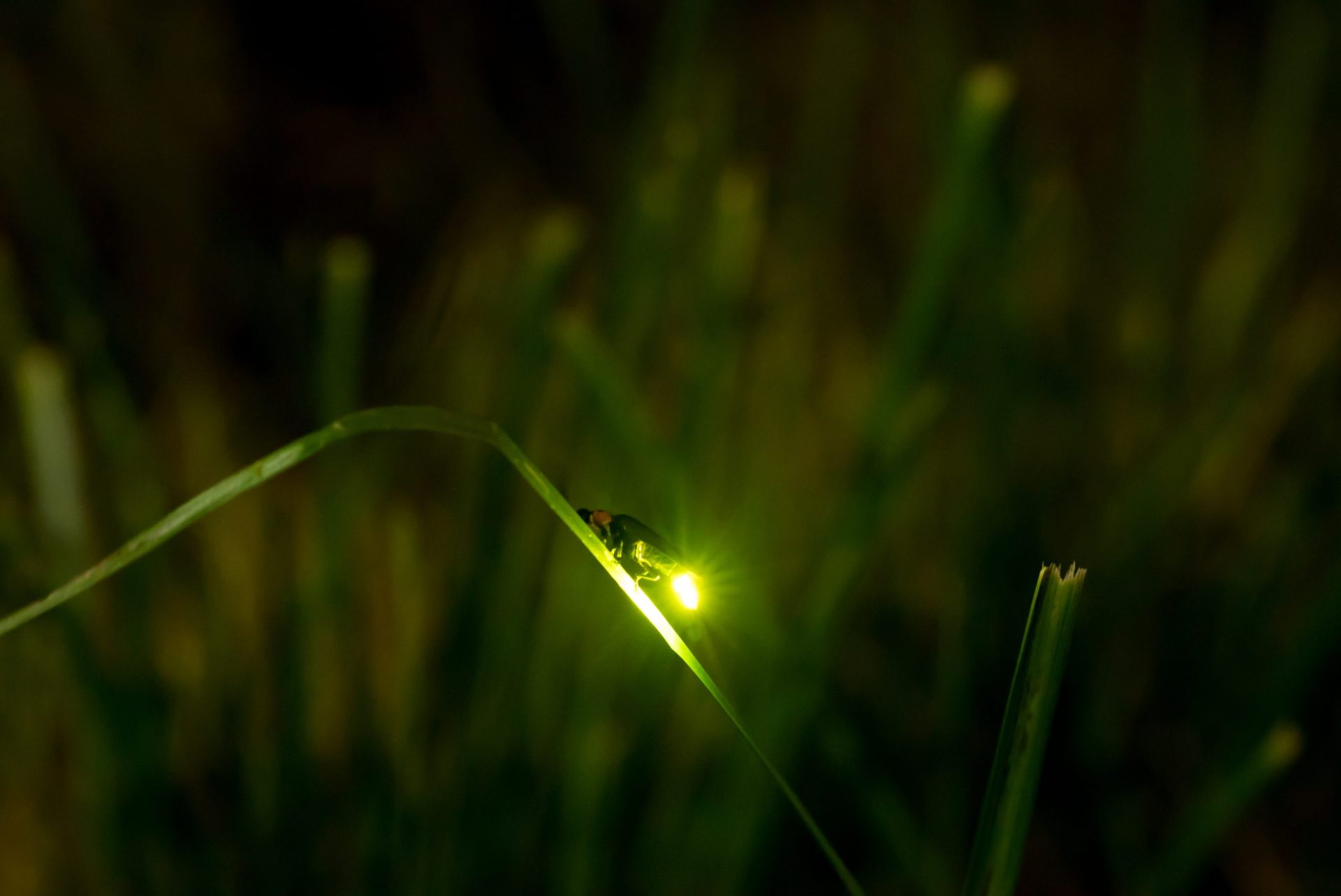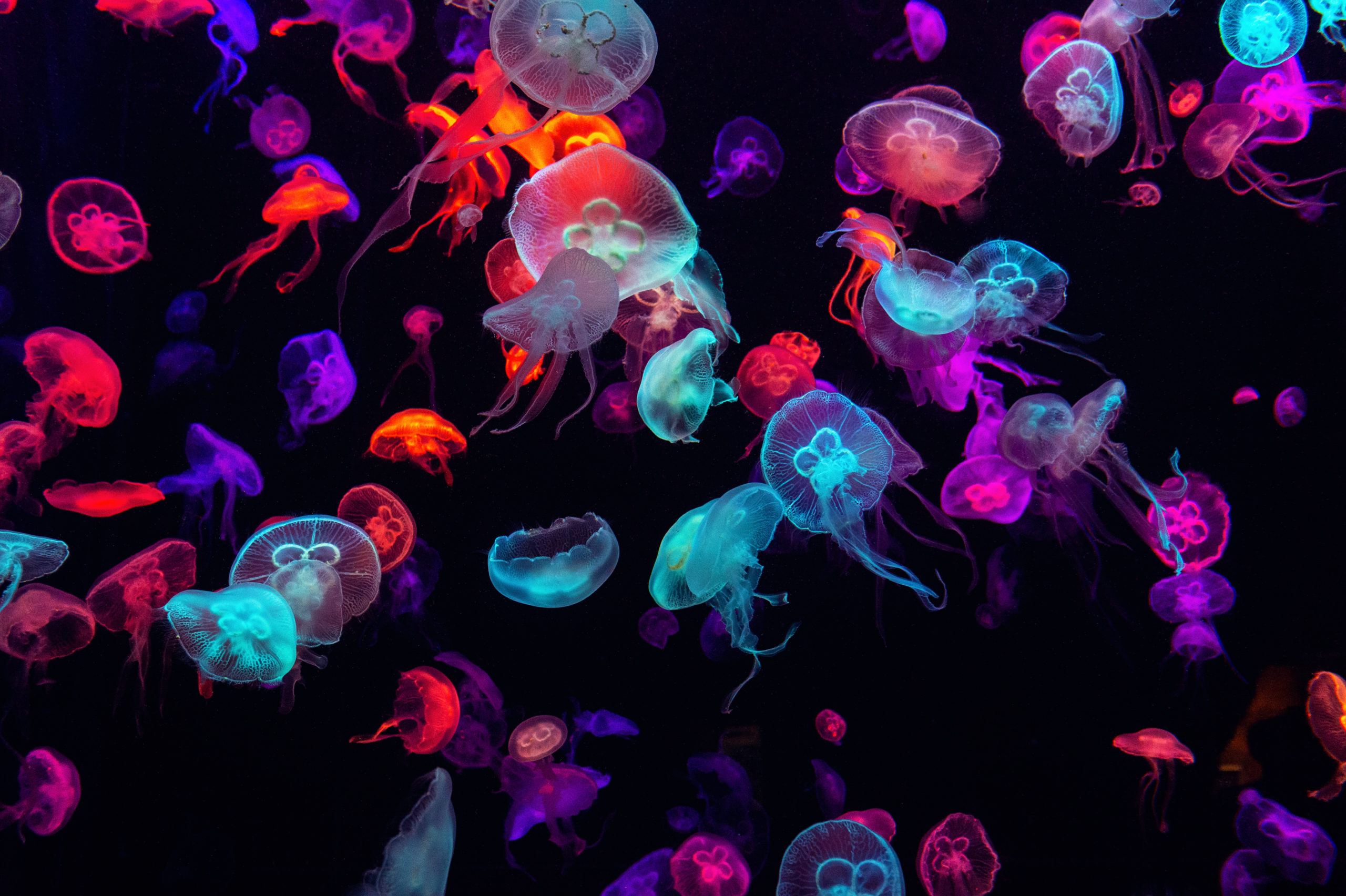Bioluminescence is a fascinating natural phenomenon that has captured the attention of scientists, artists, and nature lovers alike. From glowing jellyfish to luminous mushrooms, many creatures have evolved the ability to produce light, creating stunning displays in the darkness of the ocean depths or the forest floor. In this blog post, we will explore the beauty and mystery of bioluminescence, and why some creatures glow in the dark.
Firstly, let’s start with the basics. Bioluminescence is the production and emission of light by a living organism.
This phenomenon is different from fluorescence, which involves the absorption of light and the subsequent emission of light at a longer wavelength. Bioluminescence is a chemical process that requires specific enzymes and substrates, and it occurs in a variety of organisms, including bacteria, fungi, algae, and animals.
Now, you may be wondering: why do organisms produce light?
There are several reasons why bioluminescence can be advantageous for an organism. For example, bioluminescence can serve as a form of communication, allowing organisms to attract mates, deter predators, or signal to members of their own species. Some species of fireflies, for instance, use their bioluminescence to attract mates during their courtship displays. On the other hand, some deep-sea creatures, such as anglerfish, use their bioluminescent lure to attract prey in the dark depths of the ocean.
 Another advantage of bioluminescence is camouflage. Some creatures, such as deep-sea shrimp and squid, can emit light to match the ambient light and blend in with their surroundings, making it harder for predators to detect them. This adaptation is known as counterillumination, and it is especially important for animals that live in the open ocean, where there is no shelter to hide from predators.
Another advantage of bioluminescence is camouflage. Some creatures, such as deep-sea shrimp and squid, can emit light to match the ambient light and blend in with their surroundings, making it harder for predators to detect them. This adaptation is known as counterillumination, and it is especially important for animals that live in the open ocean, where there is no shelter to hide from predators.
Now, let’s talk about the science behind bioluminescence.
Bioluminescence is a complex process that involves several steps. First, an enzyme called luciferase catalyzes a chemical reaction between a substrate molecule and oxygen. This reaction produces an excited state intermediate, which then emits light as it returns to its ground state. The color of the light emitted depends on the type of substrate and the structure of the excited state intermediate. For example, luciferin, a common substrate in bioluminescent reactions, can produce green, yellow, or red light depending on the species.
One of the most fascinating aspects of bioluminescence is its diversity.
Bioluminescence can be found in a wide variety of organisms, from bacteria and fungi to fish and insects. Some of the most well-known bioluminescent creatures are found in the ocean, where the darkness creates the perfect environment for light production. For example, dinoflagellates are tiny algae that can create glowing waves in the water at night. The famous “glow-in-the-dark” jellyfish, Aequorea victoria, has been extensively studied for its green fluorescent protein, which has revolutionized the field of molecular biology and allowed scientists to visualize and track specific molecules inside cells.
 However, bioluminescence is not limited to marine environments. Many insects, such as fireflies and glow-worms, use bioluminescence to attract mates or prey. Some fungi, such as the mycelium of Armillaria mellea, can create glowing patches on the forest floor. Even some mammals, such as the opossum, have been found to have bioluminescent fur.
However, bioluminescence is not limited to marine environments. Many insects, such as fireflies and glow-worms, use bioluminescence to attract mates or prey. Some fungi, such as the mycelium of Armillaria mellea, can create glowing patches on the forest floor. Even some mammals, such as the opossum, have been found to have bioluminescent fur.
Despite the many advances in our understanding of bioluminescence, there is still much we don’t know about this phenomenon.
For example, some deep-sea creatures can produce bioluminescent flashes that last only a fraction of a second, yet they can control the timing and intensity of these flashes with remarkable precision. How do they do it? We still have much to learn about the mechanisms behind this phenomenon.
 Furthermore, bioluminescence is not just a scientific curiosity.
Furthermore, bioluminescence is not just a scientific curiosity.
It has inspired artists and writers for centuries, from the glowing descriptions in Jules Verne’s “Twenty Thousand Leagues Under the Sea” to the bioluminescent sculptures of Olafur Eliasson. Bioluminescence has also inspired researchers to develop new technologies, such as bioluminescent sensors and imaging techniques, that have practical applications in medicine, environmental monitoring, and more.
Despite its many benefits, bioluminescence is not without its risks.
Some bioluminescent organisms, such as the dinoflagellates responsible for “red tide” events, can produce harmful toxins that can be dangerous to humans and marine life. In addition, bioluminescent organisms are often threatened by habitat destruction, pollution, and climate change, which can disrupt the delicate ecosystems that support these creatures.
 In conclusion, bioluminescence is a fascinating and beautiful natural phenomenon that has captured the imagination of humans for centuries.
In conclusion, bioluminescence is a fascinating and beautiful natural phenomenon that has captured the imagination of humans for centuries.
From deep-sea creatures to glowing mushrooms, bioluminescence can serve as a form of communication, camouflage, or even a means of attracting prey or mates. While we have made great strides in understanding the science behind bioluminescence, there is still much we don’t know about this mysterious process. As we continue to study bioluminescent organisms, we can learn more about the delicate balance of ecosystems and the intricate processes that sustain life on our planet.
Install MyStart Theme for Google Chrome







